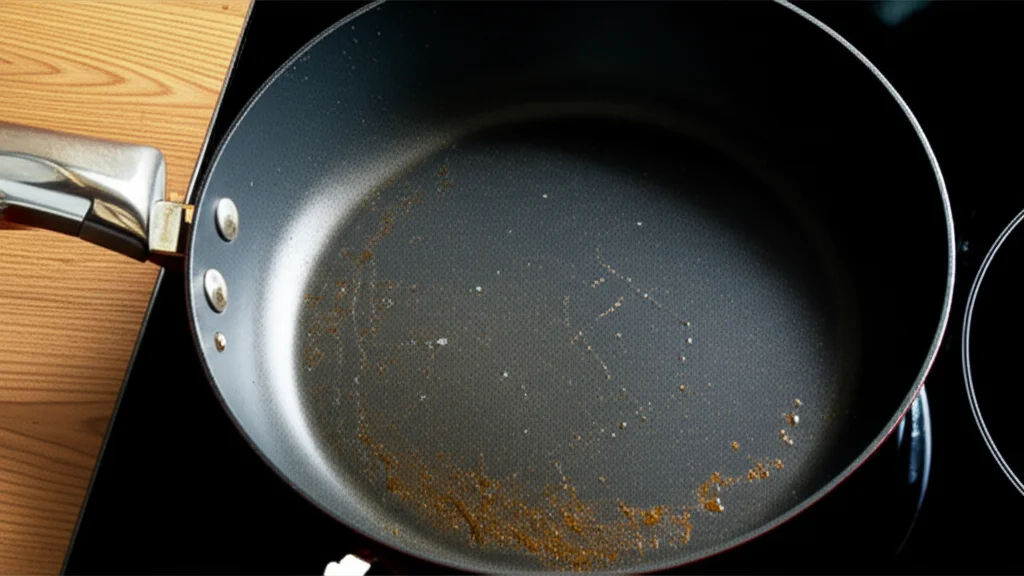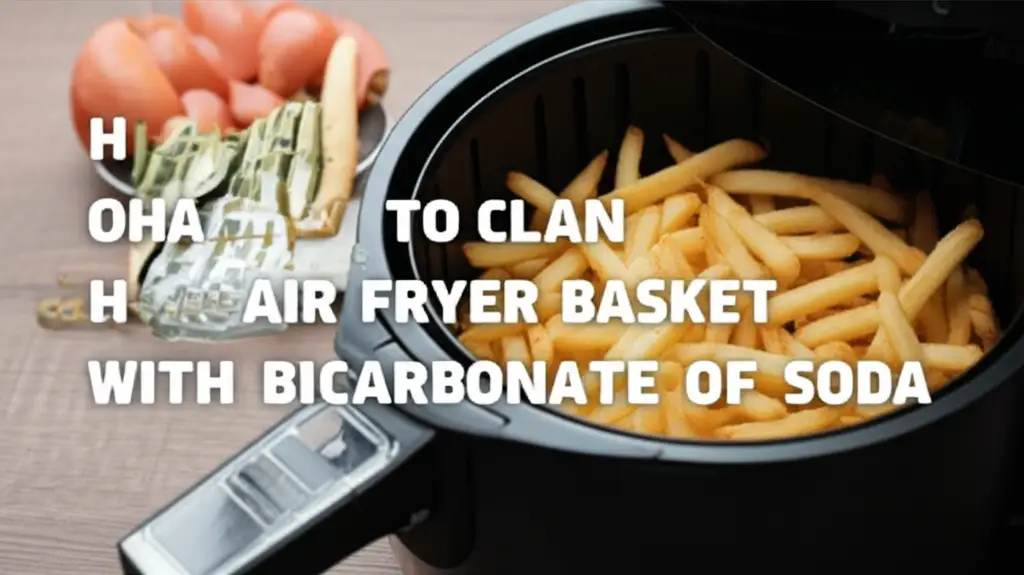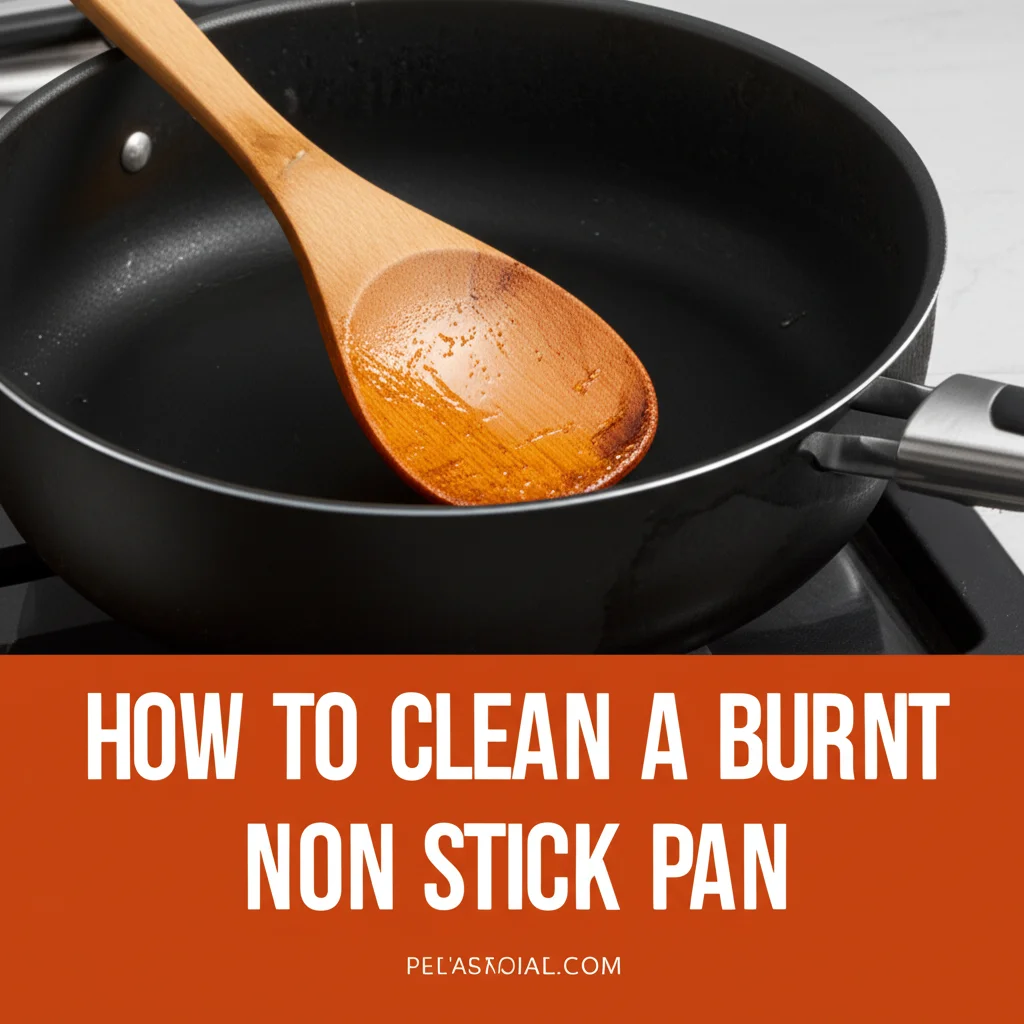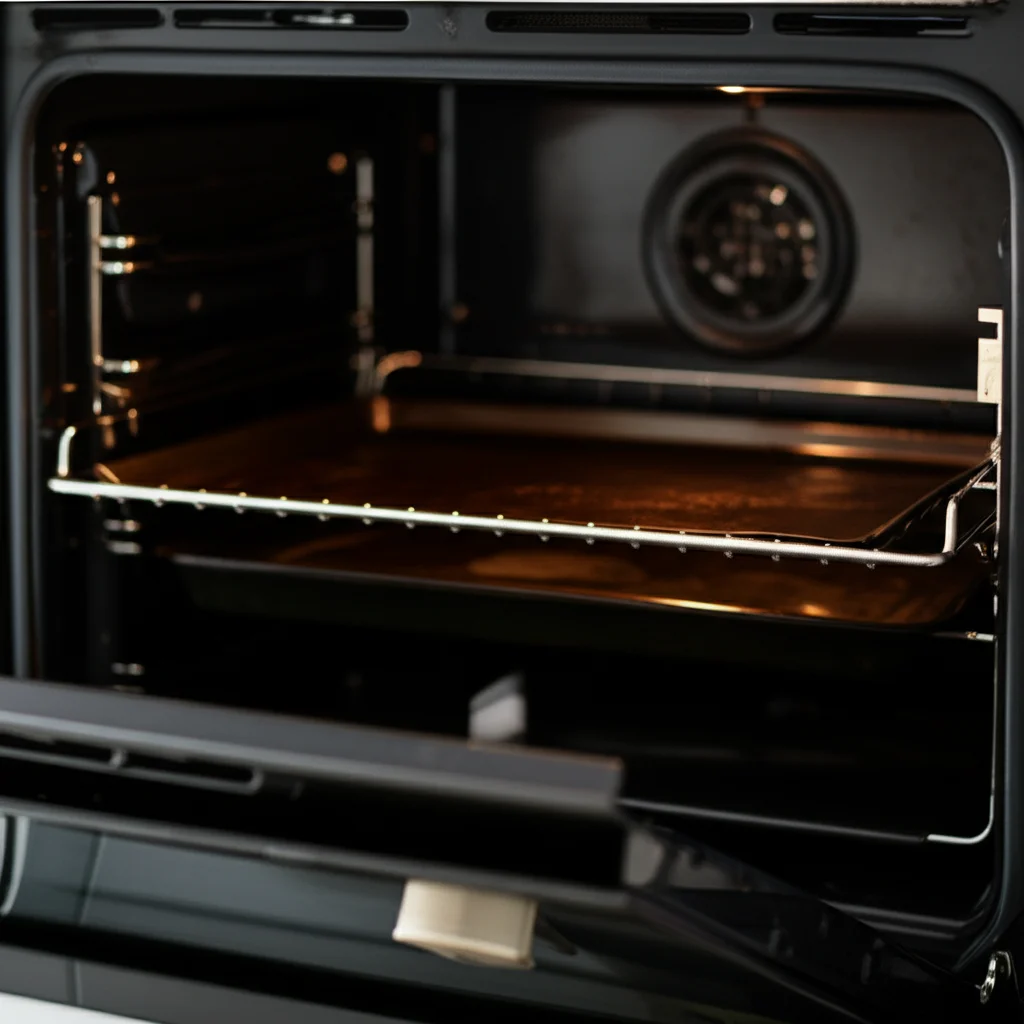· Todd Martin · Kitchen Cleaning · 13 min read
How To Clean Burnt Oil From Stainless Steel Pan

How to Clean Burnt Oil from Stainless Steel Pans Effectively
There is nothing quite like a stainless steel pan for cooking. These pans are durable and cook food evenly. However, even the most careful cook can end up with burnt oil stuck to their stainless steel pan. This stubborn residue can feel impossible to remove.
I know how frustrating it is to see your favorite pan covered in black, charred oil. You might feel like throwing it out, but do not. Many effective methods exist to restore your pan. This article will show you simple, effective ways to clean burnt oil from stainless steel pans. We will cover natural remedies and stronger solutions. You will learn how to bring your pan back to its shiny, usable state.
Takeaway
- Use baking soda and vinegar for effective burnt oil removal.
- Boiling water with dish soap works for lighter stains.
- Cream of tartar helps with stubborn discoloration.
- Always let the pan cool before cleaning.
- Avoid abrasive scrubbers to protect the pan’s surface.
Cleaning burnt oil from a stainless steel pan typically involves using a combination of soaking, natural abrasives, and chemical reactions. Common methods include boiling water with dish soap, creating a paste with baking soda and water, or utilizing vinegar and baking soda to lift stubborn, charred residues. Patience and gentle scrubbing are key to restoring the pan’s surface.
Understanding Burnt Oil on Stainless Steel
You know the sight: a perfectly good meal, then suddenly, black, charred residue sticks to your pan. This burnt oil is more than just a mess. It is a chemical change. When oil heats past its smoke point, it polymerizes. This process makes the oil sticky and hard. It turns into a hard, plastic-like film.
Stainless steel pans are wonderful for cooking. They are durable and distribute heat well. However, their smooth surface makes burnt oil highly visible and difficult to clean. Standard dish soap and a sponge often fail against this hardened layer. I have tried that many times. It is like trying to scrub concrete with a feather.
The key to cleaning burnt oil is understanding its nature. You need to break down that polymerized layer. Simple scrubbing often scratches the pan. This is why we need specific methods. These methods help to loosen or dissolve the burnt oil. They allow you to remove it without damaging your pan.
The Baking Soda and Vinegar Method: A Natural Approach
This method is often my first choice for burnt oil. Baking soda and vinegar are powerful natural cleaners. They work together to create a strong reaction. This reaction helps to lift and break down stubborn burnt-on food and oil. It is also safe for your pan.
First, let the pan cool completely. Never put a hot pan under cold water. This can warp the pan. Next, sprinkle a generous layer of baking soda over the burnt area. Make sure it covers the entire affected surface. Then, pour a small amount of white vinegar directly onto the baking soda.
You will see a fizzing reaction. This is normal and good. It means the cleaners are working. Let the mixture sit for at least 15-30 minutes. For very tough stains, I let it sit for a few hours or even overnight. After soaking, add a little warm water to the pan. Use a non-abrasive scrubber, like a nylon brush or sponge, to gently scrub the burnt oil away. The residue should now come off much easier. Rinse the pan thoroughly with warm water.
Step-by-Step Guide for Baking Soda and Vinegar:
- Cool the Pan: Ensure the stainless steel pan is completely cool to the touch.
- Apply Baking Soda: Sprinkle a thick layer of baking soda directly onto the burnt oil.
- Add Vinegar: Pour white vinegar over the baking soda. Watch it fizz.
- Soak: Let the mixture sit for 15-30 minutes, or longer for tough stains.
- Scrub Gently: Add warm water and scrub with a non-abrasive sponge or brush.
- Rinse: Rinse the pan thoroughly and dry it.
Boiling Water and Dish Soap: Simple and Effective
Sometimes, the burnt oil is not too severe. For these lighter cases, boiling water with dish soap is a good first step. This method is gentle and easy. It can save you from using stronger chemicals. I use this trick for recent spills.
Start by filling your pan with enough water to cover the burnt area. Add a few drops of dish soap to the water. Place the pan on the stove and bring the water to a boil. Let it boil for 10-15 minutes. The hot water and soap work to loosen the burnt residue.
After boiling, carefully remove the pan from the heat. Let the water cool down enough to handle safely. Once it is cool, pour out the water. Use a non-abrasive sponge or scraper to remove the softened burnt oil. You might need to repeat this process for very stubborn stains. This method is effective for preventing tough build-up if you address the problem early.
Quick Steps for Boiling Water and Soap:
- Fill Pan: Add enough water to cover the burnt area.
- Add Soap: Pour a few drops of dish soap into the water.
- Boil: Bring the water to a boil and let it simmer for 10-15 minutes.
- Cool and Drain: Let the water cool, then drain it.
- Scrub: Use a non-abrasive scrubber to remove the loosened residue.
- Rinse: Rinse the pan well.
Cream of Tartar for Brightening and Cleaning
Cream of tartar is a less common but very effective cleaning agent for stainless steel. It is a mild acid that can help remove discoloration and burnt stains. It also leaves your pan looking bright and shiny. I often use it to give my pans an extra polish after cleaning.
To use cream of tartar, mix it with a small amount of water to form a paste. The paste should be thick enough to spread but not too dry. Apply this paste directly to the burnt oil stain. Make sure to cover the entire area. Let the paste sit on the stain for 10-15 minutes. This allows the acid to work on the burnt residue.
After soaking, use a soft sponge or cloth to scrub the area gently. The cream of tartar’s mild abrasive quality, combined with its acidic nature, helps lift the burnt oil. You might notice the pan’s surface looking cleaner and brighter. Rinse the pan thoroughly with warm water after scrubbing. This method is excellent for general discoloration as well as specific burnt spots.
Using Commercial Stainless Steel Cleaners
Sometimes, natural remedies are not enough. For truly tough, baked-on burnt oil, commercial stainless steel cleaners can be your best friend. These products are formulated to tackle the most stubborn stains. They contain stronger cleaning agents. I keep one on hand for those really bad accidents.
There are different types of commercial cleaners. Some are powders you mix with water, others are sprays or gels. Always read the product instructions carefully. Each product has specific directions for use. Apply the cleaner as directed. Often, you will apply it, let it sit for a specified time, and then scrub.
When using commercial cleaners, make sure you are in a well-ventilated area. Some of these products have strong fumes. Wear gloves to protect your hands. Use a non-abrasive pad or sponge to scrub the pan. Never use steel wool or harsh metal scrubbers. These can permanently scratch your stainless steel. After cleaning, rinse the pan thoroughly to remove all chemical residue. Your pan should look brand new after a successful application.
Important Considerations for Commercial Cleaners:
- Read Instructions: Always follow the manufacturer’s specific directions.
- Ventilation: Use in a well-ventilated space to avoid inhaling fumes.
- Protective Gear: Wear gloves to protect your skin.
- Non-Abrasive Tools: Use soft sponges or cloths for scrubbing.
- Rinse Thoroughly: Ensure all chemical residue is removed from the pan.
Important Tips for Safe and Effective Cleaning
Cleaning burnt oil from stainless steel requires more than just knowing the right products. It also involves using proper technique and safety measures. My experience has taught me that patience and care prevent damage. Always prioritize the longevity of your pan.
First, always let your pan cool down completely before cleaning. Putting a hot pan in cold water can cause thermal shock. This can warp your pan or even crack it. A warped pan will not sit flat on your stove, leading to uneven cooking. This is a crucial first step for any cleaning method.
Second, avoid abrasive materials at all costs. Steel wool, harsh scouring pads, or metal scrapers will scratch the surface of your stainless steel pan. These scratches not only look bad but can also make it easier for food and oil to stick in the future. Always opt for nylon scrubbers, soft sponges, or plastic scrapers. I prefer silicone spatulas for gently scraping.
Third, persistence pays off. Some burnt oil stains are extremely stubborn. You might need to repeat a cleaning method several times. Do not get discouraged if the stain does not come off on the first try. Each attempt will loosen the burnt oil further. You can also try combining methods, like boiling with soap first, then moving to baking soda and vinegar.
Finally, always rinse your pan thoroughly after cleaning. Any residue from cleaning agents can affect the taste of your food or even damage the pan over time. Make sure you rinse it completely. Then, dry it immediately to prevent water spots. Proper drying keeps your stainless steel looking its best.
Key Cleaning Pointers:
- Always Cool: Let the pan cool before starting any cleaning process.
- No Abrasives: Do not use steel wool or metal scourers on stainless steel.
- Be Patient: Stubborn stains may require multiple cleaning attempts.
- Rinse Well: Always rinse the pan completely after cleaning to remove residue.
- Dry Immediately: Prevent water spots by drying the pan right away.
Maintaining Your Stainless Steel Pan to Prevent Future Burnt Oil
Preventing burnt oil is always better than cleaning it. Proper care and cooking habits can significantly reduce the chances of stubborn stains forming. I learned these tricks over time, and they have saved me a lot of scrubbing. Taking a few extra steps during cooking can make a big difference.
One of the most common causes of burnt oil is overheating an empty pan. Stainless steel heats up quickly. If you put oil in an already smoking hot pan, it will burn almost instantly. Always add oil to a cold or warm pan, then heat both together. This allows the oil to heat gradually. It reaches its cooking temperature without burning.
Another crucial tip is to use the right amount of heat. High heat is not always necessary, especially for oil. Medium heat is often sufficient for most cooking tasks. If you see smoke coming from your oil, it is too hot. Remove the pan from the heat immediately. Let it cool slightly before continuing. This prevents the oil from reaching its smoke point and polymerizing.
Ensure your pan is clean before each use. Leftover residue from previous cooking can burn and create new layers of stubborn stains. A quick wash with soap and water after every use is essential. This prevents minor build-up from becoming a major problem. Keeping your pan clean helps maintain its non-stick properties over time.
Lastly, consider “seasoning” your stainless steel pan. While not true seasoning like cast iron, you can create a temporary non-stick surface. Heat the pan on medium-low heat. Add a thin layer of oil. Let it heat until you see faint wisps of smoke, then remove from heat and let it cool. Wipe out the excess oil. This creates a slightly more non-stick surface. This minor step can help prevent food and oil from sticking.
Prevention Tips for Stainless Steel Pans:
- Heat Gradually: Add oil to a warm pan, then heat together.
- Control Heat: Use medium heat; avoid overheating the pan.
- Clean Regularly: Wash the pan thoroughly after each use.
- “Season” Pan: Create a temporary non-stick layer with oil and heat.
FAQ Section
Can I use steel wool on stainless steel pans?
No, you should not use steel wool on stainless steel pans. Steel wool is too abrasive. It can cause permanent scratches on the pan’s surface. These scratches not only look bad but also create tiny crevices. Food and oil can get stuck in these spaces, making future cleaning even harder. Always use softer options like nylon scrubbers or sponges.
How do I remove black burnt oil stains?
To remove black burnt oil stains, start with a baking soda and vinegar paste. Apply the paste to the stain and let it sit for a few hours or overnight. The reaction between baking soda and vinegar helps loosen the charred residue. For very tough stains, consider using a specialized commercial stainless steel cleaner designed for burnt-on messes, following product instructions carefully.
Is it safe to use oven cleaner on stainless steel pans?
Generally, it is not recommended to use oven cleaner on stainless steel pans. Oven cleaners are very harsh and contain strong chemicals. They can potentially damage the finish of your stainless steel, causing discoloration or pitting. Stick to methods specifically designed for stainless steel, such as baking soda, vinegar, or dedicated stainless steel cleaners, to protect your pan.
How can I prevent oil from burning in a stainless steel pan?
Preventing oil from burning involves controlling heat and using the right amount of oil. Always add oil to a pan before heating it. Heat both together slowly over medium heat. Do not let the pan become smoking hot before adding oil. If you see smoke, the oil is already burning. Reduce heat and try again.
Why does oil burn on my stainless steel pan?
Oil burns on a stainless steel pan when it reaches its smoke point. This happens when the oil gets too hot. At this temperature, the oil breaks down and polymerizes, forming a hard, sticky, burnt residue. Overheating an empty pan or using too high a heat setting are common causes of oil burning.
How often should I deep clean my stainless steel pan?
You should deep clean your stainless steel pan whenever you notice significant burnt oil build-up or discoloration. For regular cleaning, a simple wash with dish soap and water after each use is enough. Deep cleaning methods like baking soda and vinegar are for when standard cleaning no longer works, or the pan looks dull.
Conclusion
Cleaning burnt oil from stainless steel pans does not have to be a nightmare. With the right techniques and a little patience, you can bring your favorite cookware back to life. I have found these methods to be very effective in my own kitchen. Remember, the key is to understand why oil burns and how different cleaning agents work on that stubborn residue.
Whether you choose the natural power of baking soda and vinegar, the simplicity of boiling with dish soap, or the targeted action of a commercial cleaner, you have the tools to tackle any burnt mess. Always prioritize gentle methods first to protect your pan’s surface. By following these steps and maintaining your pans properly, you will keep them shining for years to come. Do not let burnt oil intimidate you. Take action today and restore your stainless steel pan to its former glory. Happy cooking!
- cleaning stainless steel
- burnt oil removal
- pan cleaning
- kitchen hacks
- household cleaning





